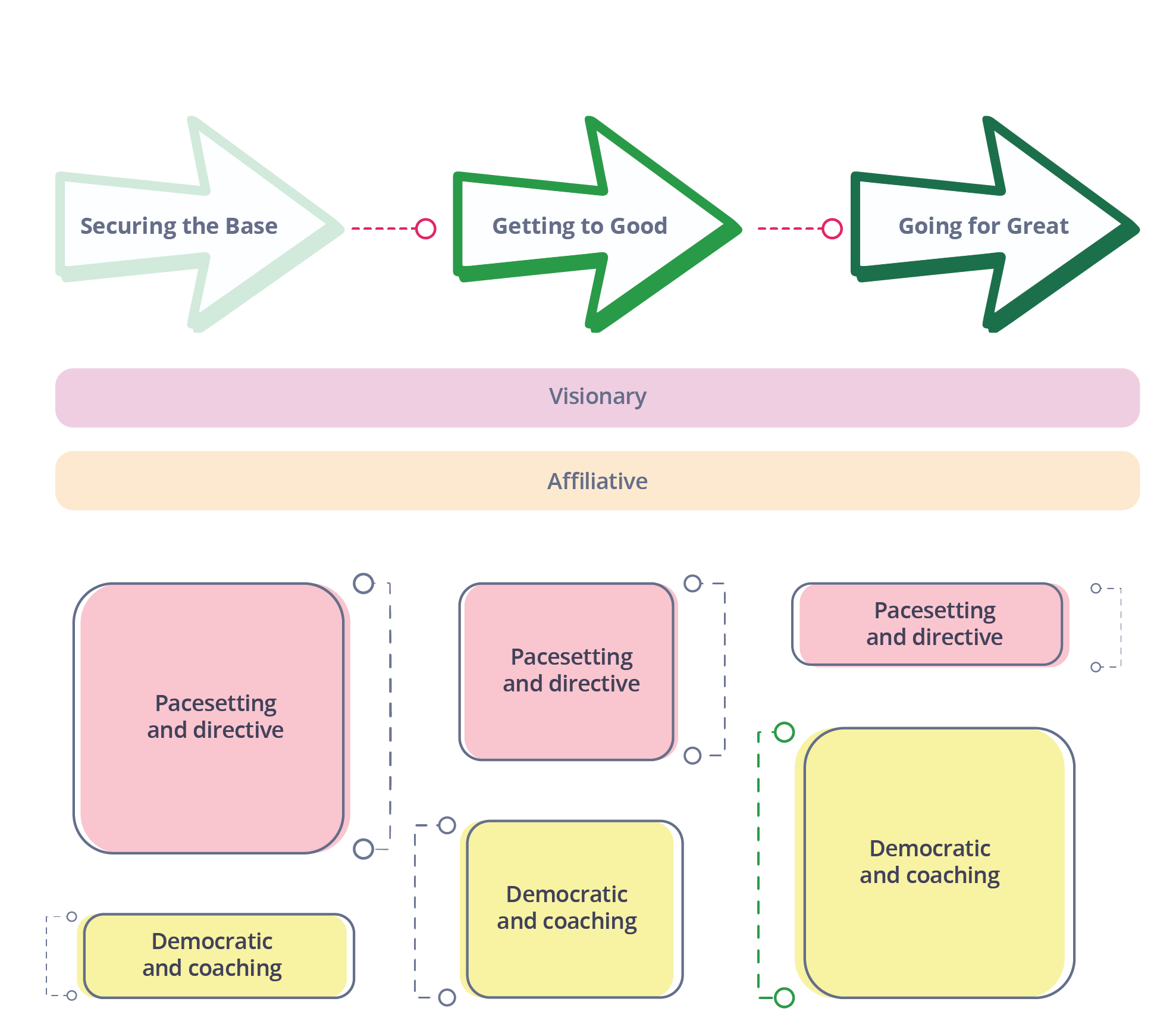
Leadership in education: how do we choose the right approach?
The accelerated development of education in recent times has created new needs and standards, often with higher demands than we have known before. Among these has emerged the need for role models to set and implement standards that are appropriate to the level of education now, but above all to prepare the ground for the future. It is well known that early education plays an important role because it is here that the foundations of a child's entire development are laid.
It is well known that early education plays an important role, because this is where the foundations of a child's entire development are laid. Based on this reality, the FIRST7 Training Centre for Parents and Educators, together with Helen O'Donoghue, early childhood trainer and director of Sunridge Associates, has designed a leadership programme for educational team coordinators and those who run nurseries and kindergartens in Romania. The main goal of an educator and an educational leader is for their actions to have a real impact on learning. In order to do this, it is necessary to create connections, to understand what one's role is, to constantly learn, and to remain open and flexible to emerging possibilities. In the second edition of the webinar How to be a good leader in early education,delivered with support from Kinderpedia, Helen discussed leadership styles and how to apply each of them so that at the end of the day you feel you have made a difference to learning.Daniel Goleman's leadership styles
We can speak of the existence of six leadership styles based on the categories defined by Daniel Goleman: visionary, directive, democratic, coaching, affiliative, pacesetting. Some we need in the short term, others in the long term, some can serve us punctually, others we can deepen. Each of us has a style that we feel comfortable with, that represents us as leaders, but at the same time, we can practice other styles that may be useful to us at some point.
The visionary style requires the leader to have a clear vision, which they develop and share with others, and a long-term direction
He convinces his employees by explaining the rationale behind his actions for the collective good of the team. The visionary leader sets standards, monitors performance and motivates team members through positive as well as negative feedback based on clear criteria. Successful leaders are people with vision. They don't necessarily build the foundation but give direction. We all want to have confidence in the future, and visionary leadership best fulfills this need. It communicates purpose and expectations, is based on 1:1 discussions, and can be applied in almost any situation.
Affiliate style is based on building and sustaining relationships
The leader who practices an affiliated style seeks harmony among employees and focuses more on their needs than on goals or standards. It pays attention to the individual in its complexity and avoids confrontations that are related to performance standards. Such a style is needed in difficult, crisis times, such as the pandemic context, when people need to be treated as individuals and receive validation, trust, and attention. But this style lacks rigour, so it needs to be used interchangeably with other styles.
Directive leadership style is based on directives, not directions
The leader exerts a lot of control, immediate performance is expected, sanctions are applied, and explanations or positive feedback are almost completely absent. Can be useful when there is time pressure or not enough skills among employees.
In contrast to the directive style is the democratic style, where the leader wants to build commitment, develop and implement new ideas
Trust that employees can move in the right direction, both for themselves and for the school, invites employees to participate in the decision-making process. Holds lots of meetings and listens to everyone's views. In this style of leadership, there is a risk that consensus is very hard to achieve and employees become too divided.
Coaching style pursues rapid progress and accomplishment of tasks to high standards of excellence
Coaching leadership is one characterized by collaboration, support, and guidance. Coaching leaders are focused on bringing out the best in their teams by guiding them through goals and obstacles. This leadership style is very much opposite to autocratic leadership, which is focused on top-down decision making.
The pacesetting leader is concerned with the long-term professional development of employees
Pacesetting is a style of leadership when a leader leads from the front, constantly sets high standards for their team and expects them to exceed with minimal management.
It is important to know all these leadership styles.

Leadership for Education serves as an introduction to a number of key educational leadership strategies.
Leadership style: the journey of a school
Andy Buck, Leadership Matters 3.0. How Leaders At All Levels Can Create Great Schools
Leaders need to know themselves, to know exactly who they are, to go beyond their limits. It is important not to forget that the learner is the focus of learning and how we influence them is essential. Leadership styles evolve and it's not about the destination, it's about the journey. Leaders in education need different skills than a leader in other fields precisely because they influence and impact children's learning and lives.
A school seen as a learning organisation "requires all those involved in the system to express their aspirations, expand their scope of knowledge and develop their skills together" (Senge, 2012). The expression of a learning organisation emphasises the humanistic, interactional and value-adding dimension of school experiences.
An effective leader knows his or her strengths and uses them so that the set goals are achieved. At the same time, they manage to remain flexible and look at other styles that they have not yet mastered in order to get the big picture. When the leader juggles the advantages of each leadership style easily, he or she is able to quickly embrace the dynamic changes that inevitably occur. Together with their teams, leaders are challenged to keep pace with digitisation and new learning developments. It is important that children's educational needs are met at school and at home, and this can happen when the family-educational partnership is healthy. Find out why some of the most prestigious schools and kindergartens have chosen Kinderpedia and discover for yourself the benefits of the communication and management platform for education.

Kinderpedia
The complete communication and management solution for schools and childcare centres.
Simplifies teachers' work and brings parents closer to their children's school progress.
Recommended articles
Want to improve your center quality? Kinderpedia is here to help! Not only do we provide thousands of informational content pieces like blog posts, podcasts, webinars and more, we are also makers of the #1 Rated and Reviewed Childcare Software.







